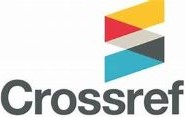ASSESSING THE PERFORMANCE OF STUDENTS WITH DIFFERENT BACKGROUND AND STUDYING CERAMICS
Abstract
For almost a decade, the Ghanaian educational system for ceramics studies at the tertiary level has allowed senior high students with various academic backgrounds to specialize in ceramics at the tertiary level. Though a very laudable idea, there has yet to be an assessment of their performance in a studio-oriented ceramic programme to inform policy and institutional decisions. This study, therefore, assesses the performance of ceramic students with diverse academic backgrounds. The study used quantitative and qualitative approaches, revealing that students with no background in art struggle with ceramic studio assignments, especially those that studied Home Economics and General Arts. Though students with a Science background appear to do well in the soil science-related courses of ceramics, there are still challenges with art concepts and art history. It is recommended that there is a need for counseling and orientation of mind for students who did not choose ceramics as their first choice and those without art backgrounds.
Full Text:
PDFReferences
Asimaki, A. & Vergidis, K.D. (2013). Detecting the Gender Dimension of the Choice of the Teaching Profession Prior to the Economic crisis and IMF Memorandum in Greece: A Case Study, International Educational Studies, 6:4, 140-153
Bodjawah, E.K., Nortey, S. & Boafo, K.K (2019), Modernism and Reforms in Contemporary
Ghanaian Art Education, International Journal of Education through Art, 15:2, 45-56.
Carvalho, R.G.G (2016). Gender differences in academic achievement: The Mediating role of personality. Personality and Differences, 94: 54-58.
Cleary-Holdforth, J. (2007). Student non-attendance in higher education. A phenomenon of students’ apathy or poor pedagogy? Level, 3:5, 1-14
Crisp, G., Palmer, E., Turnbull, D., Netelbeck, T., and Ward, L. (2009). First year student expectations results from a university-wide student survey. J. Univ. Teach. Learn. Pract. 6:200.
Eccles, J.S., & Wigfield, A. (2002). Motivational Beliefs, Values, and Goals, Annu. Rev. Psychol, 53, 109-132
Field, S. (2012). “Understanding attendance and non-attendance motivation amongst first year undergraduate students,” in SOLSTICE and CLTR Conference 2012, Edge Hill University (Ormskirk)
Hernandez-Pina, F., Rosario, P., Tejada, J.D., Claire, P. & Lara, E. (2006). Promotion of Strategic Learning and Learning Skills in First Year University Students: Evaluation of an Intervention, Rev. Invest Educ. 24, 615-632.
Hulleman, C.S., Barron, K.E., Kosovich, J.J., & Lazowski, R.A (2016). Student Motivation: Current Theories, Constructs, and Interventions within an expectancy value framework. In a A.A. Lipnevich, F. Preckel, & R.D Roberts (Eds), The Springer series on human exceptionality. Psychosocial skills and school systems in the 21st century: Theory, Research and Practice (pp. 241-278)
Kuncel, N.R., Hezlett, S.A., & Ones, D.S. (2004). Academic performance, Career Potential, Creativity, and Job Performance: Can one construct predict them all? J. Person. Soc. Psychol, 86, 148-161
James, R., Krause, K, & Jennings, C. (2010). The First-Year Experience in Australian Universities: Findings from 1994-2009: Melbourne, The University of Melbourne, Centre of Study of Higher Education
Lerdpornkulrat, T., Koul, R., & Poondej, C. (2018). Relationship between perceptions of Classroom Climate and Institutional Goal Structures and Student Motivation, Engagement and Intention to Persist in College, J. Furth. High. Educ, 42, 102-115
Longden, B. (2006). An institutional response to changing student expectations and their impact on retention rates. J. Higher Educ. Policy Manage. 28, 173-187
Lowe, H., and Cook, A. (2003). Mind the Gap: Are Students prepared for Higher Education? J. Furth. High. Educ. 27, 53-76
Lyons, T. (2006). The puzzle of falling enrolments in Physics and Chemistry Courses: Putting some pieces together, Research in Science Education, 36:3, 285-311
Nortey, S. (2022). Women and Ceramics in Ghana, Journal of Science and Technology, 7: 4, 54-68
Nortey, S & Bodjawah, E.K. (2014). Submission of Art Studio Assignments: Students Experience, Journal of Science and Technology, 34, 3, 88-99.
Nortey, S., Opoku-Amankwah, K. & Bodjawah, E. K. (2013). Factors affecting low ceramics specialization decisions in the KNUST Industrial Art Degree Programme, Journal
of Education through Art, 9:2, 205-218.
Richardson, P.W. & Watts, H.M.G. (2007). Who chooses Teaching and Why? Profiling Characteristics and Motivations across Three Australian Universities, Asia Pacific Journal of Education, 34:1, 27-56.
Sequeira I, Daly P (2012) Student Associations: The Promotion of Cultural and Social Engagement of Future Managers. In: Educational innovation in economics and Business Conference 21, Haarlem, 1 June.
Walton, G.M., & Spencer, S.J. (2009). Latent ability grades and test scores systematically underestimate the intellectual ability of negatively stereotyped students. Psychol. Sci. 20, 1132-1139.
Yorke, M. & Longden, B. (eds.). (2004). Retention and Student Success in Higher Education, Buckingham: Society for Research into Higher and Open University Press
DOI: http://dx.doi.org/10.17977/um037v8i12023p1-13
Refbacks
- There are currently no refbacks.

This work is licensed under a Creative Commons Attribution-ShareAlike 4.0 International License.


















